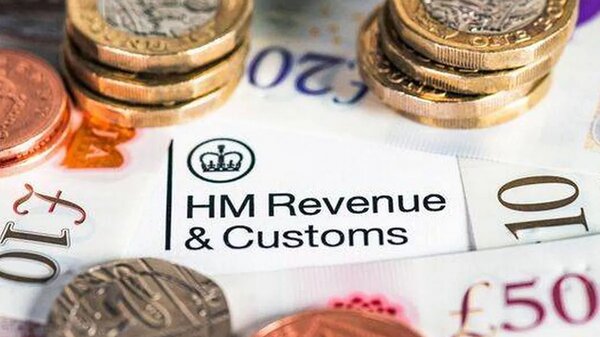All you need to know
A self employed person has different rights and obligations regarding maternity leave compared to employees.
Self-employed mothers deserve financial support during their maternity leave just as much as employees do. Maternity Allowance is available to women who are employed or self employed, and this article will help you understand how to get maternity allowance, including eligibility and the application process. When you’re running your own business, planning for time off to have a baby can feel overwhelming.
Your finances often become the primary concern, especially with the uncertainty of variable income.
Pie tax‘s real-time tax dashboard makes tracking your income and benefit entitlements straightforward during maternity leave. Or if you’re just here to get to grips with it all, let’s break it down!
What is Maternity Allowance and how does it work?
Maternity Allowance is a government benefit providing financial support to pregnant women who don’t qualify for Statutory Maternity Pay. To meet the eligibility requirements for Maternity Allowance, you must be employed or self-employed, and you need to have worked and paid National Insurance contributions for at least 26 weeks in the 66 weeks before the week before your baby is due (the qualifying period). You can be qualified even if you have worked in different jobs or for more than one employer during this period.
You can claim it for up to 39 weeks, with the current standard rate at £172.48 per week (2023/24 tax year). The rate maternity allowance you receive depends on your average weekly earnings and actual earnings during the test period. You can qualify for the full rate maternity allowance if you have paid enough National Insurance contributions, and the maximum amount is £172.48 per week.
That’s about £6,726 in total if you qualify for the full amount. Average earnings and actual earnings are used to calculate the amount you receive, and earnings from different jobs or more than one employer can be combined for eligibility. The expected week of childbirth, the weeks before your baby is due, and the week before your baby are all important for determining eligibility and payment start dates.
The good news is that Maternity Allowance isn’t taxable income. You won’t need to pay tax or National Insurance on it.

Maternity Allowance for self-employed women: the basics
If you’re self-employed and pregnant, Maternity Allowance could be your financial lifeline during early motherhood. Unlike employees who might get Statutory Maternity Pay, self-employed women rely on this benefit. Self employed people and self employed persons have different rights and obligations compared to employees, especially regarding maternity benefits.
Your employment status whether you are employed, self-employed, or working through your own limited company affects your eligibility for maternity pay. Those operating through a limited company or their own limited company may have different rules for statutory maternity pay.
To qualify, you need to have been self-employed for at least 26 weeks during the 66 weeks before your baby’s due date. These weeks don’t have to be consecutive. Your self employed earnings are used to determine both your eligibility and the amount of payment you receive
. If you have recently stopped working as a self employed person, you may still be eligible for Maternity Allowance. If you help in your spouse or civil partner’s self-employed business, including through unpaid work, you may qualify for Maternity Allowance for up to 14 weeks. Unpaid work for a spouse or civil partner’s registered self-employed business can also help you become qualified for this benefit.
You’ll also need to have paid Class 2 National Insurance contributions for at least 13 of those weeks. If you haven’t, you can make voluntary contributions to qualify.
The standard rate is £172.48 per week, but this depends on your National Insurance record. If you haven’t paid enough contributions, you might get the lower rate of £27 per week.
How to apply for Maternity Allowance when self-employed
To claim Maternity Allowance, you need to complete the MA1 form and follow the steps to claim MA through the Department for Work and Pensions (DWP). You can download the MA claim form from GOV.UK or request it by phone.
You can claim MA from 14 weeks before your due date. There is a strict time limit: you must submit your MA claim within 3 months after your baby is born to claim the full amount.
If you live in Northern Ireland, the process to claim maternity allowance may differ, so check local guidance.
If you are not eligible for Maternity Allowance, you may be able to claim Universal Credit instead.
If you disagree with a decision about your claim, you can request a mandatory reconsideration from the DWP.
If you are self-employed and need help with registration or National Insurance contributions, contact HMRC for guidance.
Along with your application, you’ll need to provide your MATB1 certificate from your midwife or doctor. You’ll also need proof of your due date and evidence of your self-employment.
This evidence can include your self-assessment tax returns or business accounts. If you registered as self-employed recently, your CWF1 registration form will work too.
Processing typically takes around 3-4 weeks. Apply in good time before you plan to start your maternity leave.
If your situation is complex or you need further advice, consider contacting organizations like Maternity Action for expert support.

Tax implications of Maternity Allowance for self-employed women
While Maternity Allowance itself isn’t taxable, there are still tax considerations to keep in mind. You don’t need to declare Maternity Allowance on your self-assessment tax return. If you are not eligible for paid maternity allowance, you may be able to claim Employment and Support Allowance or Employment Support Allowance.
However, you’ll still need to complete a tax return for any self-employed work you did during the tax year. If your income drops significantly during maternity leave, you might end up in a lower tax bracket. Your family income may also affect your eligibility for other benefits such as Universal Credit or support allowance.
Even if you’re not working, you might still have business expenses during maternity leave. Keep track of these as they may still be tax-deductible.
When I had my first child, I continued paying for my business insurance and website hosting. These expenses reduced my taxable profit, even though my actual work had temporarily paused.
National Insurance and Maternity Allowance
Your National Insurance contributions are crucial for qualifying for Maternity Allowance. You need to have paid Class 2 NICs for at least 13 weeks in your test period.
If you discover you haven’t paid enough, you can make voluntary Class 2 NIC payments to qualify. In some cases, you may need to pay Class 2 National Insurance contributions to meet the eligibility criteria for Maternity Allowance. At £3.45 per week (2023/24), this is often worth doing to increase your allowance.
During your Maternity Allowance period, you’re automatically credited with Class 1 National Insurance contributions. This protects your state pension entitlement.
If you continue some self-employed work while receiving Maternity Allowance, you may still be liable for Class 2 NICs. This depends on your profits.

Working while claiming Maternity Allowance
Self-employed women can work for up to 10 "Keeping in Touch" (KIT) days during their Maternity Allowance period. You won't lose any benefit for working these days.
These KIT days can be useful for maintaining client relationships or completing essential work. Any income you earn on these days is taxable as normal self-employed income.
Make sure to include this income in your self-assessment tax return. If you work more than 10 days, your Maternity Allowance will stop permanently.
If you decide to return to work fully before your Maternity Allowance period ends, inform the DWP immediately. Failure to do so could result in having to repay benefits.
How Maternity Allowance affects other benefits
Your Maternity Allowance may affect other benefits you receive, such as Universal Credit or Tax Credits. Maternity Allowance counts as income when calculating Universal Credit. Receiving a maternity allowance payment may reduce your universal credit payment.
This means your UC payment might be reduced while you’re receiving it. For Tax Credits, Maternity Allowance doesn’t count as income for Working Tax Credit. Maternity allowance payments can also affect your entitlement to shared parental leave or pay.
However, it does count for Child Tax Credit calculations. If you’re claiming Housing Benefit, Maternity Allowance is counted as income. Paid maternity allowance is treated as income for some benefits.
It’s worth doing a benefits check before your baby arrives. This helps you understand how your overall financial situation will change.

Final Thoughts
Maternity Allowance provides essential financial support when taking time away from self-employment to have a baby. While the application process is straightforward, planning ahead is key.
Make sure your National Insurance contributions are up to date before applying. Remember that while the benefit itself isn't taxable, it may affect your overall tax position.
Keep accurate records of any work you do during your maternity leave. This will make completing your self-assessment much easier when the time comes.
Pie.tax: Simplifying Maternity Allowance Self-employed Tax
Tracking your income and benefits during maternity leave doesn't need to be complicated with the right tools at hand. Pie.tax, the UK's first personal tax app, helps you see exactly what maternity allowance you're entitled to.
Our app clearly separates taxable income from non-taxable benefits. This gives you a clear picture of your finances during this important life change.
When you use those valuable KIT days, Pie.tax makes it simple to log your income and expenses. Nothing gets missed on your tax return, even during this busy time.
The app automatically calculates how your reduced working hours affect your annual tax position. This helps you budget more effectively during your maternity period.
Want to see how it works? Take a look at our app to discover how we can make tax simpler during your maternity leave.











